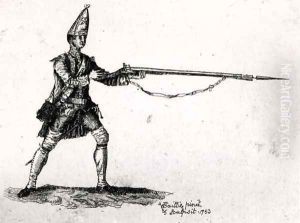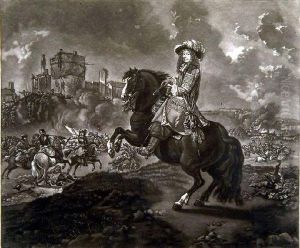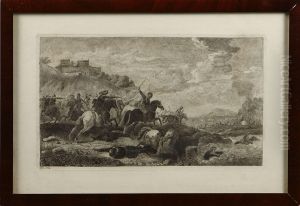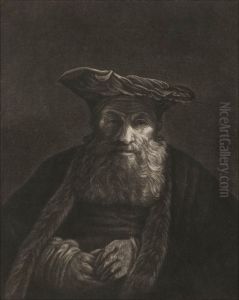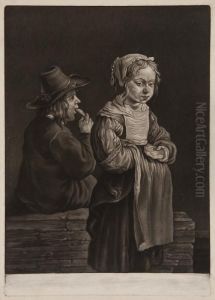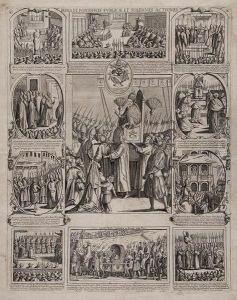William Baillie Paintings
Captain William Baillie, born in 1723, was not only a military man but also a significant figure in the art world, particularly known for his contributions to printmaking. Baillie's career in the arts is often remembered for his innovative techniques and his reproductions of works by old masters.
Baillie was originally from Ireland and embarked on a military career early in life, joining the army at the age of eighteen. He eventually achieved the rank of Captain in the 3rd Regiment of Foot Guards. Throughout his military career, Baillie maintained a strong interest in art, which would come to play a central role in his life after his retirement from the army in 1761.
In his retirement, Baillie devoted himself to the study and creation of prints. He was particularly fascinated by the works of renowned artists such as Rembrandt, whose style greatly influenced his own etchings and mezzotints. Baillie was not only a printmaker but also a collector and dealer, and he became well known for his expertise in the field. He had an eye for detail and quality, which he applied to his own printmaking process. This led to the production of prints that were highly regarded for their fidelity to the originals and their exquisite craftsmanship.
Baillie's approach to printmaking was methodical and innovative; he often reworked plates by other artists, adding his own touches or bringing a new level of detail to the prints. His work was unique in that he sometimes altered the original compositions, thereby creating prints that were considered original works in their own right. Baillie's prints were sought after by collectors and connoisseurs who appreciated his skill in capturing the essence of the old masters while also contributing his own artistic vision.
Despite his military background, Baillie's legacy lies in his artistic endeavors. He left behind a body of work that continues to be studied and admired for its technical proficiency and contribution to the art of printmaking. William Baillie died in 1810, leaving a lasting impact on the world of art. His works are still collected and exhibited today, serving as a testament to his talent and dedication to the craft of printmaking.
